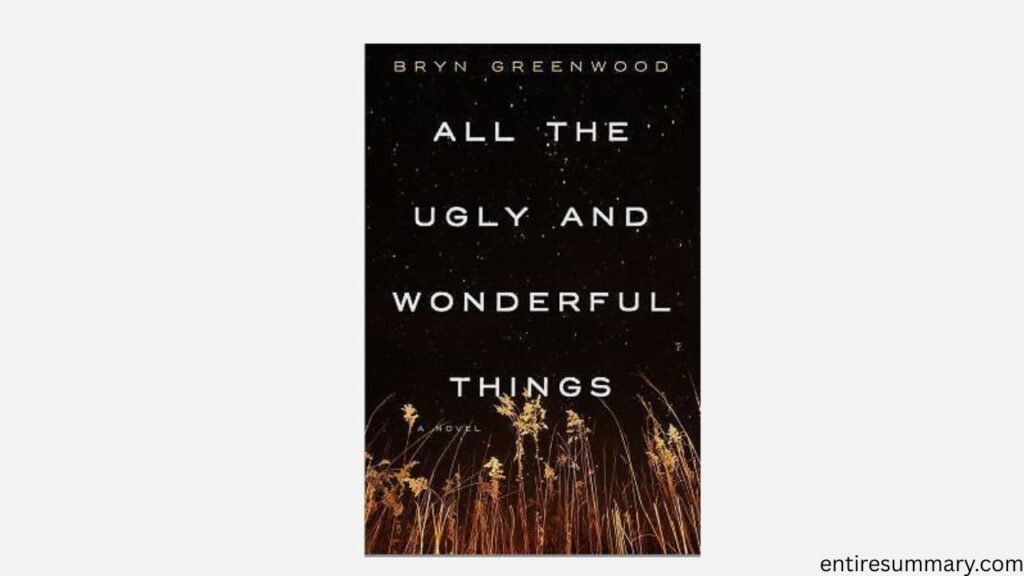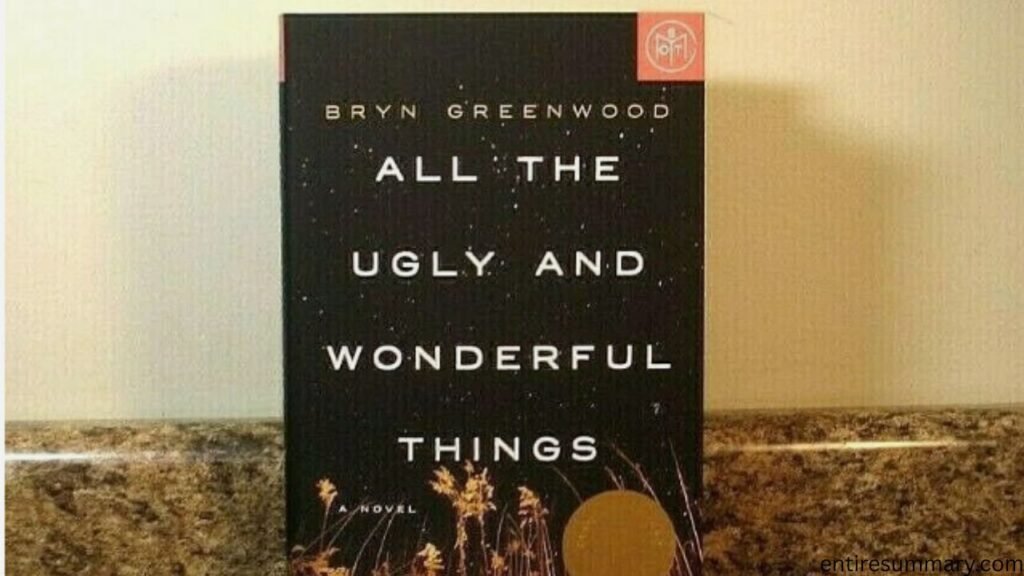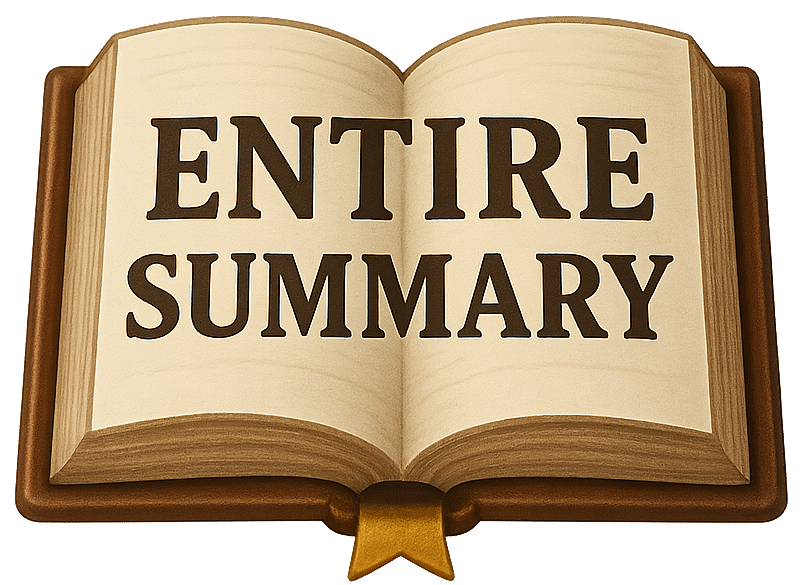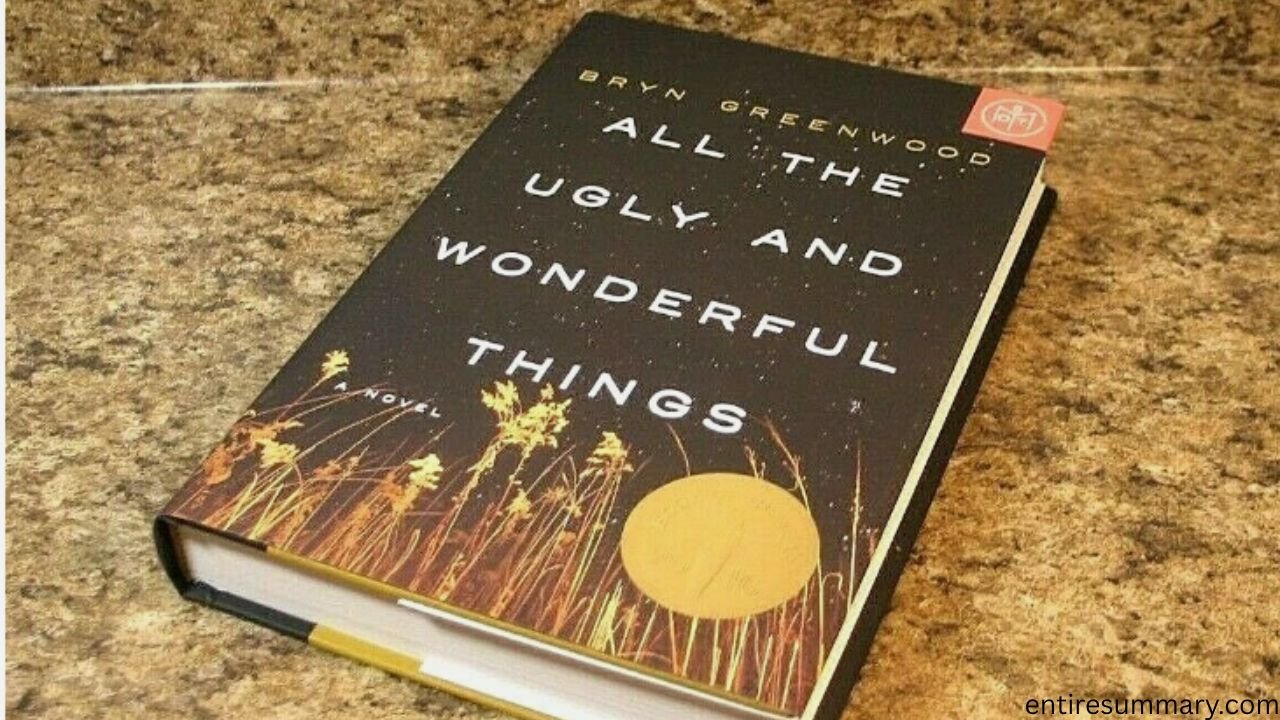All the Ugly and Wonderful Things by Bryn Greenwood is a contemporary fiction novel that pushes boundaries and challenges readers with its raw storytelling. The book blends themes of trauma, resilience, forbidden love, and survival, making it one of the most talked-about novels in recent years. Here’s a clear, structured summary that walks through the key events and emotional turning points of the book.
First Half Summary (Key Events)
The story begins in the 1970s with Wavonna Quinn, known as Wavy, a young girl growing up in a deeply troubled family. Her parents are drug addicts involved in criminal activities, which forces Wavy to mature faster than most children. Often left to care for herself and her younger brother Donal, Wavy learns independence in unsafe conditions. From a very young age, she speaks little, preferring silence over words, and her world is marked by neglect and instability. Her mother struggles with addiction, and her father runs a meth operation, exposing Wavy to chaos and danger.
Also read: /predictably-irrational/
In the midst of this, Wavy meets Jesse Joe Kellen, a much older man who works for her father. Although his life is rough and rooted in crime, Kellen treats Wavy with care and compassion, offering her the stability she desperately needs. He drives her to school, feeds her, and becomes her anchor in a world of turmoil. Their relationship begins as a friendship and a protective bond. For Wavy, Kellen becomes her safe space, someone who sees her worth when others overlook her. As she grows older, this bond deepens, and though it becomes controversial, Greenwood portrays it with nuance, showing the complex ways love and care can emerge from unlikely circumstances.
The first half of the novel lays the groundwork for Wavy’s emotional journey, showing how she survives neglect and abuse while leaning on her resilience and her connection to Kellen. It highlights the fragility of her childhood and the strength she discovers within herself.

Second Half Summary (Climax to Ending)
In the second half, the relationship between Wavy and Kellen becomes increasingly complicated as it faces the harsh judgment of society. As Wavy moves into her teenage years, their bond shifts from protective friendship to romantic involvement, sparking scandal in the community. Rumors spread, and people begin to question Kellen’s role in her life. The fragile stability Wavy clings to starts to crumble when tragedy strikes—an accident involving her parents throws her world into further disarray. With her family falling apart, Kellen steps in to fill the gap, taking on more responsibility for Wavy’s wellbeing.
But their closeness brings consequences. Law enforcement intervenes, and Kellen is arrested, accused of exploiting Wavy and crossing lines that society cannot accept. His imprisonment devastates Wavy, who finds herself in foster care, struggling to navigate a world that labels her a victim while ignoring her strength and agency. The trauma of losing Kellen weighs heavily, yet she pushes forward, refusing to let her circumstances define her.
Wavy continues to grow, building a life through education and determination. She carries the scars of her childhood but channels her resilience into creating something better for herself. The climax of the novel comes when Kellen is released from prison. Their reunion forces both characters to confront the weight of their choices, the years of judgment, and the deep emotional bond that has endured despite everything. The story does not end with a perfect resolution. Instead, it closes on a bittersweet note, showing Wavy embracing her life with strength, acknowledging both the painful and the beautiful parts of her journey.

Conclusion
All the Ugly and Wonderful Things is not a light read. It forces readers to confront uncomfortable truths about trauma, love, and morality. Wavy’s journey shows how resilience can grow out of pain, and how human connections can be both controversial and life-saving. Greenwood’s storytelling leaves readers questioning their own judgments while recognizing the complexities of survival. Whether readers agree with Wavy and Kellen’s relationship or not, the novel sparks conversation about love, choices, and the human need for care.
FAQs
1. Who is the author of All the Ugly and Wonderful Things?
Bryn Greenwood, a contemporary fiction author, wrote the book. She is known for creating raw and thought-provoking narratives.
2. What genre is the book All the Ugly and Wonderful Things?
It is contemporary fiction, though it deals with themes often found in coming-of-age and dark romance stories.
3. Who are the main characters in All the Ugly and Wonderful Things?
The main characters are Wavy Quinn and Jesse Joe Kellen, with secondary roles played by Wavy’s parents, her brother Donal, and community figures.
4. What is the central theme of the novel All the Ugly and Wonderful Things?
The main themes are survival, resilience, unconventional love, trauma, and the struggle between morality and judgment.
5. Is the relationship between Wavy and Kellen romantic?
Yes, as Wavy grows older, their relationship evolves from protective friendship into a romantic one, which causes controversy.
6. Why is the book All the Ugly and Wonderful Things considered controversial?
The age difference and power dynamics between Wavy and Kellen make readers question morality and consent, sparking debate.
7. What role do Wavy’s parents play in the story All the Ugly and Wonderful Things?
Her parents’ neglect, addiction, and criminal activities create the unstable environment that forces Wavy to depend on Kellen.
8. Does Wavy have siblings?
Yes, she has a younger brother named Donal, whom she often protects and cares for.
9. What happens to Kellen in the story All the Ugly and Wonderful Things?
Kellen is arrested and imprisoned after being accused of exploiting Wavy, though his intentions were rooted in care.
10. How does Wavy change over the course of the novel All the Ugly and Wonderful Things?
She grows from a neglected, traumatized child into a resilient young woman determined to shape her own path.
11. Is the book All the Ugly and Wonderful Things based on a true story?
No, it is a work of fiction, though the author drew on her background and observations of difficult realities.
12. What is the significance of the title All the Ugly and Wonderful Things?
The title reflects how life and love are made up of both dark (ugly) and bright (wonderful) experiences.
13. How does the novel All the Ugly and Wonderful Things end?
The ending is open and bittersweet, showing Wavy continuing her life with resilience after Kellen’s release.
14. Who is the intended audience?
The novel is for mature readers who can handle heavy themes and morally complex situations.
15. Why should someone read the book All the Ugly and Wonderful Things?
It offers a raw, emotional exploration of survival, love, and morality, challenging readers to think beyond black-and-white judgments.

